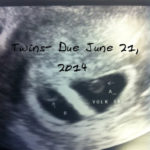
This is the second in a five-part series about loss and healing, a story shared by Shannon from Brisbane, AU. Yesterday, she shared about her first two miscarriages. Today she writes about coping through them, and her next. Check back tomorrow to hear how she worked through the fears that arose when she conceived – and found spotting – again.
“One thing that many people said to us was “At least you know you can conceive”. I understand that people generally like to find the positives in any difficult situation, but at the time I found this to be of little comfort. I felt that for us, conception was the easy part, and if we did have problems conceiving, they could probably be worked out with medical intervention. But problems carrying a baby to term seemed so much more insurmountable, and there was really very little that could be done for us if testing didn’t provide information as to why it was happening.
We soon found a lovely doctor who was an expert in multiple miscarriages. After numerous tests which didn’t give us any more information, he was still able to reassure us that our situation was considered reasonably common and that there was a very good chance that we would be more successful next time.
Next time happened about five or six months later. We were pleased, but I had to focus much more on keeping calm and trying to be positive. I was a bundle of nerves and every little twinge or sign I analysed and agonised over. I had an early scan solely to help ease my anxiety, and we were so thrilled to see a tiny flickering heartbeat. This was the first time we’d had a positive scan and we hoped that it meant this time would be different.
Five days later, at about nine weeks, I had some spotting. I went straight in for another scan. There was no heartbeat. We were devastated. I remember sitting in the room after the technician had left and sobbing into Jeremy’s chest asking “Why? Why is this happening to us again?”
The doctors were able to discover from testing that this baby had a genetic condition called Edward’s Syndrome. I felt somehow comforted knowing the reason for this third loss, and that the cause wasn’t a fundamental fault in my body. When I called the hospital to get the results of the testing, the nurse was reading through my file, and casually mentioned that this baby was a girl. This information, mentioned so offhandedly, was the hardest thing for me to deal with. Knowing the sex gave this baby an identity, and allowed me to imagine more clearly what might have been, and what we had lost. I had to grieve for a little girl who will never be, not just the vague idea of a baby who might have been.
Our hearts were aching, and the roller-coaster of emotions over the last 18 months had permeated our whole lives. I cried at the drop of a hat, and as happy as I was for friends who were having babies, I cried when I was alone for the desperation I felt to experience what they were experiencing. And I cried for the realisation that we may never have our own baby. I started to attempt to deal with the fact that just maybe I would never be able to birth my own child. I really didn’t know how many times I could go through this pain. Jeremy was a rock for me in these dark times – he was feeling the same things as me, but was also supporting and comforting me, and continually reassuring me that he still held out hope that this would work for us one day.”

Shannon is a Brisbane-based family photographer specializing in unique, natural portraits. Her work can be seen at langbecker.com.au.







